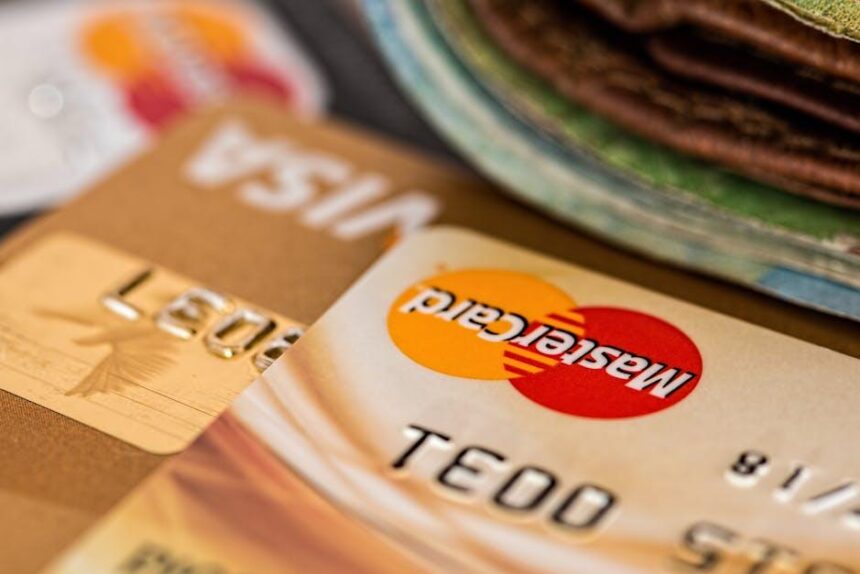Introduction
Navigating the world of banking can be a rite of passage for teens, marking their first steps into financial independence. As they transition from childhood to adolescence, learning to manage money effectively becomes crucial. Choosing the right bank is a key decision in this journey, offering not just a safe place to manage their funds but also tools and resources to foster responsible financial habits. With a variety of options available-from traditional institutions to innovative digital banks-teens and their parents need to weigh factors such as account fees, accessibility, and educational resources. This article presents essential tips to help families identify the best banking options tailored for teens in America, ensuring they are set up for success in their financial futures.
Understanding Teen Banking Needs for a Bright Financial Future
Understanding the banking needs of teens is crucial for setting them on a path to financial success. As they transition into young adults, having access to the right financial tools can empower them to make informed decisions about money. Here are some essential factors to consider when addressing teen banking needs:
- Financial Education: Many banks offer resources tailored to teens, like budgeting tools and financial literacy programs. Look for banks that provide educational materials to help teens understand how to manage their money effectively.
- Low Fees: Teens often have limited income, so it’s crucial to find accounts with little to no monthly fees. Many banks offer teen checking accounts specifically designed for young customers, including fee waivers.
- Online Banking Features: As digital natives, teens appreciate seamless online banking services. Look for banks that offer user-friendly apps for easy access to funds, mobile deposits, and real-time spending alerts.
- Parental Controls: Some accounts allow parents to monitor spending or set limits, providing a balance between independence and guidance. This feature can foster responsible money habits while still letting teens explore their financial independence.
- Interest Rates: If your teen is looking to save, consider an account that provides competitive interest rates on savings. Such options encourage good saving habits early on.
To make the selection easier, here is a quick comparison of some popular banks offering teen accounts:
| Bank Name | Account Type | Monthly Fee | Age Requirement |
|---|---|---|---|
| Bank of America | Advantage Plus Banking | No Monthly Fee | 16+ |
| Chase | Chase High School Checking | No Monthly Fee | 13-17 |
| Capital One | Money Account | No Monthly Fee | 8+ |
| PNC Bank | PepperMint Savings | No Monthly Fee | 18-24 (for full account) |
| Wells Fargo | Teen Checking Account | $5 Monthly Fee (Waived with activity) | 13-17 |
Ultimately, the goal is to equip teens with the financial tools they need to navigate their future successfully. Providing a supportive banking environment will help instill confidence and responsibility as they manage their own finances.

Key Features to Look for in a Teen-Friendly Bank Account
When choosing a bank account for teens, it’s essential to consider several key features that will facilitate financial learning and responsibility. A teen-friendly bank account should enhance their banking experience while providing a safe and manageable way to handle money. Here are the significant aspects to look for:
- No Monthly Maintenance Fees: Look for accounts that don’t charge monthly fees. Many banks offer teen accounts with no maintenance fees, allowing your teen to keep their money intact without worrying about hidden charges.
- Low Minimum Balance Requirements: Select accounts with low or no minimum balance requirements. This feature helps teens manage their funds without the stress of maintaining a specific balance.
- Access to Digital Banking Tools: A robust mobile app or online banking system can help teens track their spending, check balances, and even set savings goals easily. Look for banks that offer features like mobile deposits and easy transfers.
- Parental Controls: Some banks provide options for parents to monitor transactions. This feature can help parents guide their teens while granting them financial independence.
- Interest-bearing Accounts: Consider accounts that offer interest on balances, even if it’s a small percentage. This encourages saving while teaching the value of accumulating interest over time.
- ATM Access and No Fees: A network of ATMs with low or no withdrawal fees is crucial. Teenagers should be able to access their cash conveniently without incurring additional costs.
- Educational Resources: Look for banks that provide financial education resources. Online articles, videos, or workshops can offer valuable information on budgeting, saving, and investing that teens can benefit from.
- Flexible Account Options: A bank that offers different types of accounts can cater to your teen’s evolving needs as they progress toward adulthood. These may include savings accounts, checking accounts, or even joint accounts.
| Feature | Importance |
|---|---|
| No Monthly Fees | Helps teens manage money without worrying about costs. |
| Low Minimum Balance | Allows flexibility in fund management. |
| Digital Banking Tools | Encourages tech-savvy money management. |
| Parental Controls | Enables guidance during financial development. |
| Interest-bearing | Promotes saving and understanding interest accumulation. |
| ATM Access | Ensures easy access to cash without incurring fees. |
| Educational Resources | Improves financial literacy, preparing teens for adulthood. |
| Flexible Options | Adapts to changing financial needs as teens grow. |
By focusing on these features, you can help empower your teen to manage their finances wisely and confidently embark on their financial journey.

Navigating Fees and Charges: Choosing Wisely for Your Teen
Understanding the various fees and charges associated with banking can be a maze, especially for teens just beginning to manage their finances. As such, it’s essential to choose a bank that aligns with their financial habits and goals. Here’s what you need to consider:
- Monthly Maintenance Fees: Some banks charge a monthly fee just for maintaining an account. Look for banks with no or low fees specifically designed for teens.
- Minimum Balance Requirements: Many accounts require a minimum balance. Make sure your teen’s spending habits align with any requirements to avoid unnecessary fees.
- ATM Fees: Check if the bank offers fee-free ATM access. Using out-of-network ATMs can rack up fees quickly.
- Overdraft Fees: It’s crucial to understand overdraft policies. Some banks offer overdraft protection, while others impose hefty fees if an account goes negative.
- Transaction Limits: Some banks set limits on how many transactions can be made before additional fees kick in. Ensure the terms suit your teen’s spending style.
- Inactivity Fees: If an account has no activity for a certain period, banks may charge inactivity fees. It’s helpful to keep accounts active through regular deposits or transactions.
- Reward Programs: Some banks offer rewards like cash back or interest on savings. Evaluating these can enhance the value of choosing the right bank.
| Bank Name | Monthly Fees | ATM Access | Overdraft Protection | Rewards |
|---|---|---|---|---|
| Chase | $0-$12 | Fee-free ATMs nationwide | Available | Cashback options |
| Bank of America | $0-$12 | Extensive free ATM network | Optional | Reward programs |
| Wells Fargo | $0-$10 | Fee-free ATMs | Available | Rewards on debit card purchases |
| Capital One | $0 | No ATM fees | Available | Cashback rewards |
Before deciding, encourage your teen to weigh these factors carefully. Understanding how fees work can lead to better financial habits and a more satisfying banking experience.

Educational Resources: Empowering Teens with Financial Literacy
Empowering teens with financial literacy is crucial in navigating the complexities of banks and financial systems. By providing educational resources, we can help teens make informed choices when selecting a financial institution.
Here are some key aspects to consider when introducing financial literacy to teens:
- Understanding Banking Basics: Teens should learn about checking and savings accounts, how interest works, and the importance of managing their finances effectively.
- Importance of Credit Scores: Teach them what a credit score is, how it affects their borrowing ability, and steps to maintain or improve their score.
- Budgeting Skills: Encourage them to create budgets that account for income from allowances or part-time jobs, and how to prioritize saving versus spending.
- Safe Online Banking Practices: Discuss the importance of setting strong passwords, recognizing phishing scams, and understanding the digital tools their banks offer.
- Long-Term Financial Goals: Help them envision their financial future, whether it’s saving for college, a car, or other significant purchases.
Moreover, incorporating relevant tools and resources can enhance their understanding:
| Resource | Description | Website |
|---|---|---|
| MyMoney.gov | A U.S. government website offering tips and tools for understanding personal finance. | MyMoney.gov |
| Khan Academy | Provides free courses on personal finance topics ideal for teens. | Khan Academy |
| Jump$tart Coalition | Offers national standards for personal finance education and resources for educators and teens. | Jump$tart Coalition |
| EverFi | An online platform providing interactive courses on financial literacy for students. | EverFi |
Lastly, consider the importance of discussing real-world financial scenarios, such as:
- Comparing different banking products to find the best fit.
- Understanding how to manage student loans once they transition to college.
- Recognizing the benefits of having a bank account, such as protection against theft and easier access to funds.
By equipping teens with these essential financial skills and resources, they will be better prepared to make sound banking choices now and in the future.

To Wrap It Up
In conclusion, choosing the right bank for teens is a pivotal step in laying the foundation for financial responsibility. As young adults embark on their journey toward independence, it’s essential to consider factors such as fees, accessibility, and educational resources that can help them navigate their financial future. By prioritizing features like mobile banking, deposit options, and user-friendly interfaces, both parents and teens can ensure a positive banking experience. Ultimately, the right bank will not only meet their immediate needs but also empower them with the knowledge and tools to build a secure financial tomorrow. So, take the time to explore and evaluate options-after all, this choice can set the stage for a life of confident money management.














